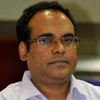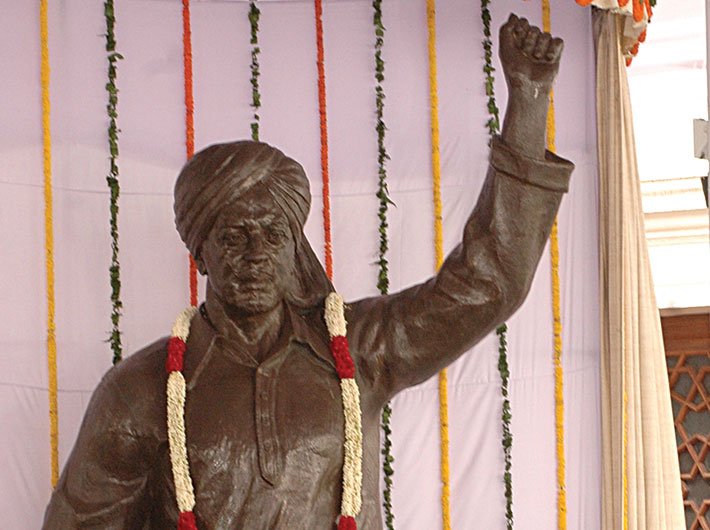The freedom fighter had no inclination towards any religion. Yet, political parties try hard to appropriate him to widen their vote base
The great revolutionary Bhagat Singh is often remembered as shaheed-e-azam (king of martyrs) not just because of his supreme sacrifice, but also for his ideas. He was one revolutionary who gave a clear picture of his dream of a free India and wrote a lot to explain the philosophy of his organisation, Hindustan Socialist Republican Association. He was not fighting for political freedom only; his real motive was to end exploitation in any form.
But after 85 years of his martyrdom, people with totally opposite views are trying to appropriate Singh. He was a known leftist. Still, right-wing organisations are using his name to attract voters, since he was a patriot. One such organisation is the Bhagat Singh Kranti Sena, members of which are known for organising physical attacks on left and liberal faces. And now a move to make Bhagat Singh a Sikh icon is also gaining momentum; they want Singh with a turban and not with a hat.
Singh’s famous ‘hat photograph’ was taken by photographer Sham Lal in Delhi on April 4, 1929, and it was sent to newspapers for publication by his comrades. The hat became his signature, just like Mahatma Gandhi is identified with his glasses and a stick.
But when in 2008 a statue of Singh was – with a turban instead of the hat – installed in the parliament complex, family and admirers of Singh raised an objection. Professor Chaman Lal, editor of the Bhagat Singh Documents (in Hindi), recalls, “When it was decided to install a statue of Bhagat Singh in the parliament complex, some organisations from Bengal had offered to gift the statue. However MS Gill, then minister in the UPA government, with support from some BJP MPs, insisted on installing the present statue which is not even close to his real turbaned photograph. This was criticised even by Singh’s family members at that time.”
Bhagat Singh’s nephew Jagmohan Singh had then told the media, “The statue is made in a way to depict him more like a regional leader. By showing him in ‘pagari’, the present leaders are trying to classify him on regional and communal lines. It is just divisive politics.” Jagmohan has done extensive research on Bhagat Singh.
This year, a bust of Bhagat Singh, based on Sham Lal’s photo, was installed in the Delhi assembly along with those of martyrs Sukhdev and Rajguru who too were executed along with Singh on March 23, 1931. The Delhi Sikh Gurdwara Management Committee was quick to raise objections. It wrote a letter to Delhi chief minister Arvind Kejriwal, asking him to replace the hat on the martyr’s statue with a turban. “There is a strong resentment in the minds of the Sikh community and their feelings have been hurt (because of) showing Shaheed-e-Azam Bhagat Singh without turban at a statue installed at the legislative assembly of Delhi,” wrote DSGMC chief Manjit Singh to Kejriwal. Manjit Singh also claimed that Bhagat Singh wanted to meet Bhai Randhir Singh, a Sikh leader who founded the Akhand Kirtani Jatha, before being executed in Lahore. However, Randhir Singh refused to meet the freedom fighter as he had shaved off his hair, thus violating the basic principles of Sikhism. Bhagat Singh, though, quickly accepted his mistake and after a two-hour meeting with Randhir Singh, he became a true believer of Sikhism, Manjit further claimed.
But Shiv Verma, Bhagat Singh’s close associate and founder member of the Hindustan Socialist Republican Association, wrote a totally opposite account. According to him, “He (Baba Randhir Singh) was a God-fearing religious man. It pained him to learn that Bhagat Singh was a non-believer. He somehow managed to see Bhagat Singh in the condemned cell and tried to convince him about the existence of God, but failed. Baba lost his temper and said tauntingly: You are giddy with fame and have developed an ego which is standing like a black curtain between you and the God.”
However, Singh left no room for any confusion. After the meeting with Randhir Singh, he wrote an argumentative essay, ‘Why I am an Atheist’. About four months prior to his execution, he wrote, “I know in the present circumstances my faith in God would have made my life easier, my burden lighter, and my disbelief in Him has turned all the circumstances too dry, and the situation may assume too harsh a shape. A little bit of mysticism can make it poetical. But I do not want the help of any intoxication to meet my fate. I am a realist. I have been trying to overpower the instinct in me by the help of reason. I have not always been successful in achieving this end. But man’s duty is to try and endeavour, success depends upon chance and environments.”
In this famous article, Singh strongly argued against the idea of God. “Pray, don’t say that it is His Law. If he is bound by any law, he is not omnipotent. He is another slave like ourselves. Please don’t say that it is his enjoyment. Nero burnt one Rome. He killed a very limited number of people. He created very few tragedies, all to his perfect enjoyment. And, what is his place in History? By what names do the historians mention him? All the venomous epithets are showered upon him. Pages are blackened with invective diatribes condemning Nero, the tyrant, the heartless, the wicked. One Changez Khan sacrificed a few thousand lives to seek pleasure in it and we hate the very name. Then, how are you going to justify your almighty, eternal Nero, who has been, and is still causing numberless tragedies every day, every hour and every minute? How do you think to support his misdoings which surpass those of Changez every single moment? I say why did he create this world – a veritable hell, a place of constant and bitter unrest?”
Criticising the trend of political parties and their sister organisations of appropriating freedom fighters, Chaman Lal says, “Historic personalities cannot be assessed or judged as per some organisations’ wishes. There has to be objective evaluation of personalities, based on their role in the society and the ideas they professed. Bhagat Singh discarded religion as such, so no religious form can be imposed on him by any organisation since his name has an emotional chord with the youth and other people of this country. Every party, even against Bhagat Singh’s professed ideas of atheism and socialism, try to use his name for getting his admirers’ votes.”
And this attempt of appropriation is not just limited to Bhagat Singh. BR Ambedkar’s name too has been used for vested interests. Pranay Krishna, who teaches at Allahabad University and is the general secretary of Jan Sankriti Manch, elaborates on the political design behind this. He says, “Bhagat Singh was born a Sikh but died an atheist. ‘Why I am an atheist’ is a testimony to his rejection of religious identity. Dr. Ambedkar had famously said that he was born a Hindu, but would not die a Hindu. He kept his promise. The forces of Hindutva trying to engineer symbolic rebirth of Singh and Ambedkar as a Sikh and a Hindu, respectively, are in fact rejecting the life-struggle of these two great men who taught their fellow compatriots how religious identity of individuals, communities and nations, was neither essential nor desirable for the future of humankind.”
Summing up, Krishna adds, “The Hindutva project cannot move forward without deliberately distorting and misrepresenting the legacy of Singh and Ambedkar, which remains a formidable ideological obstacle in their path of creating a Hindu Raj.”
Really, it is not difficult to understand this hate for Bhagat Singh’s hat.
feedback@governancenow.com
(The article appears in the April 16-30, 2016 issue)

